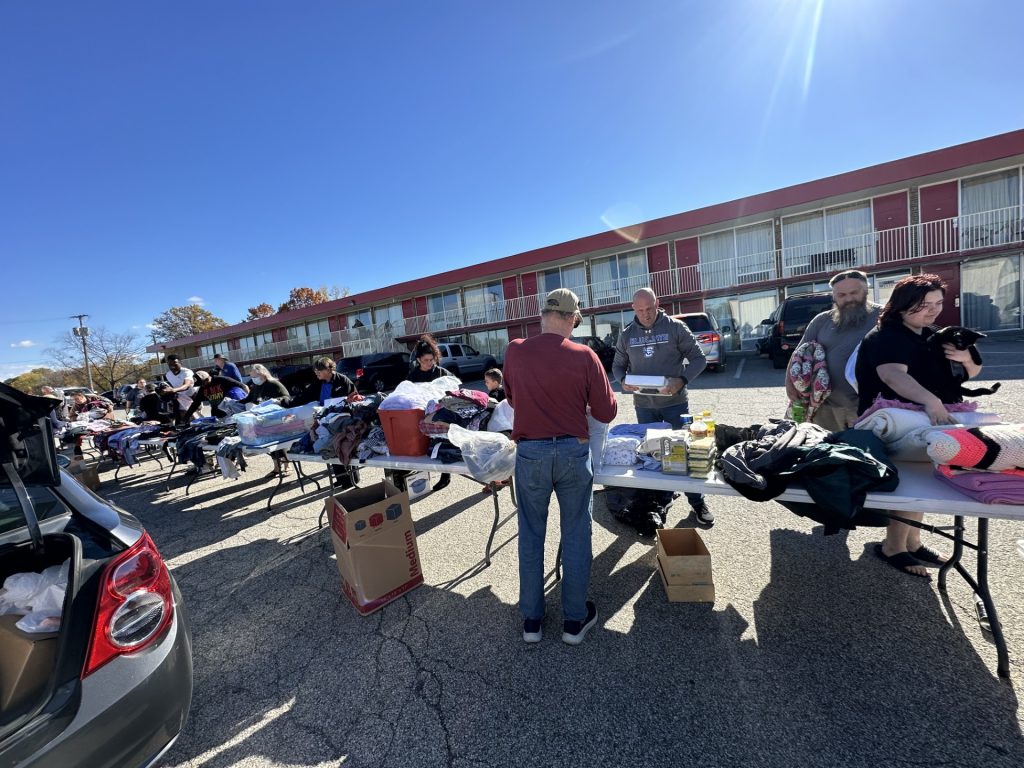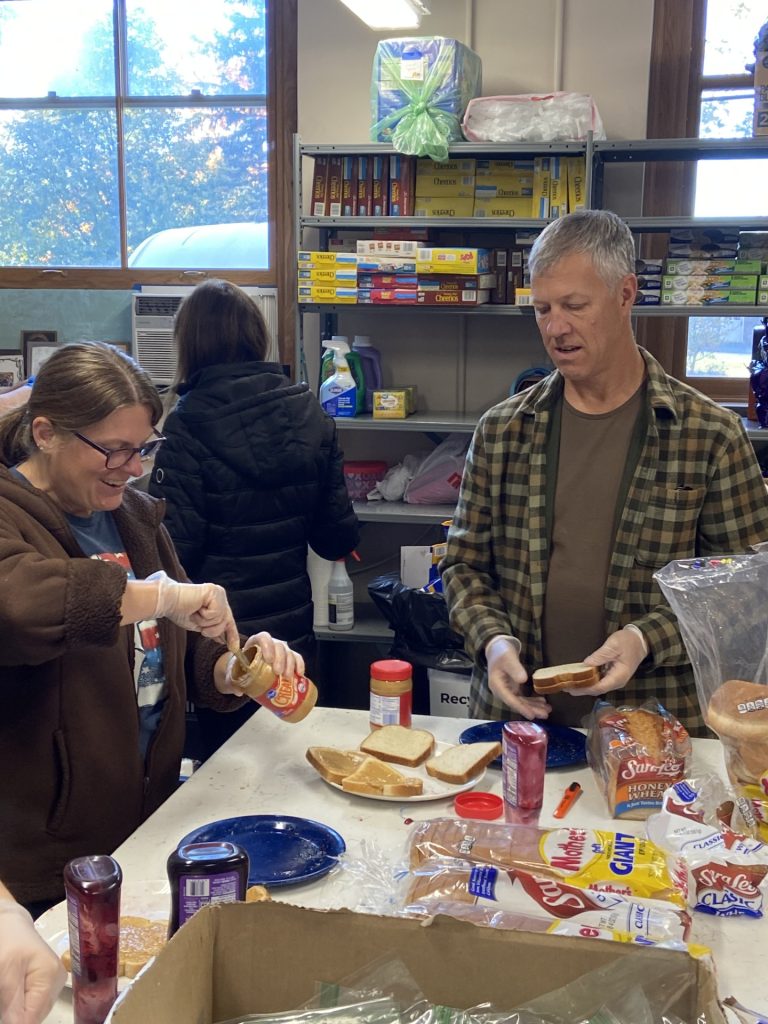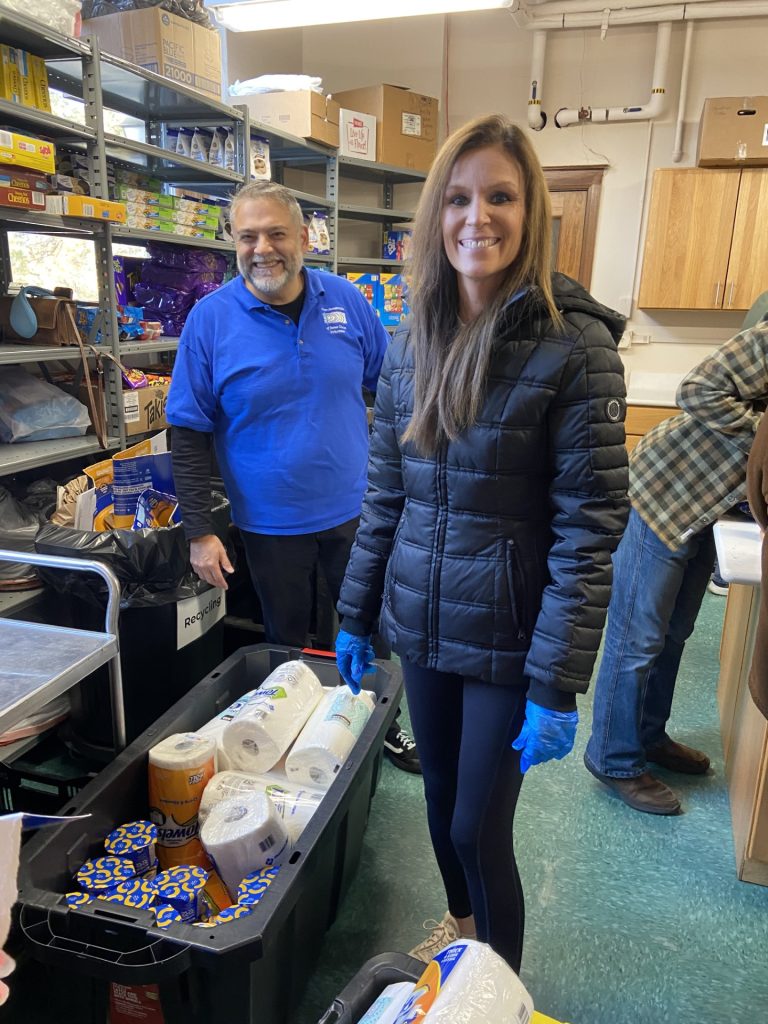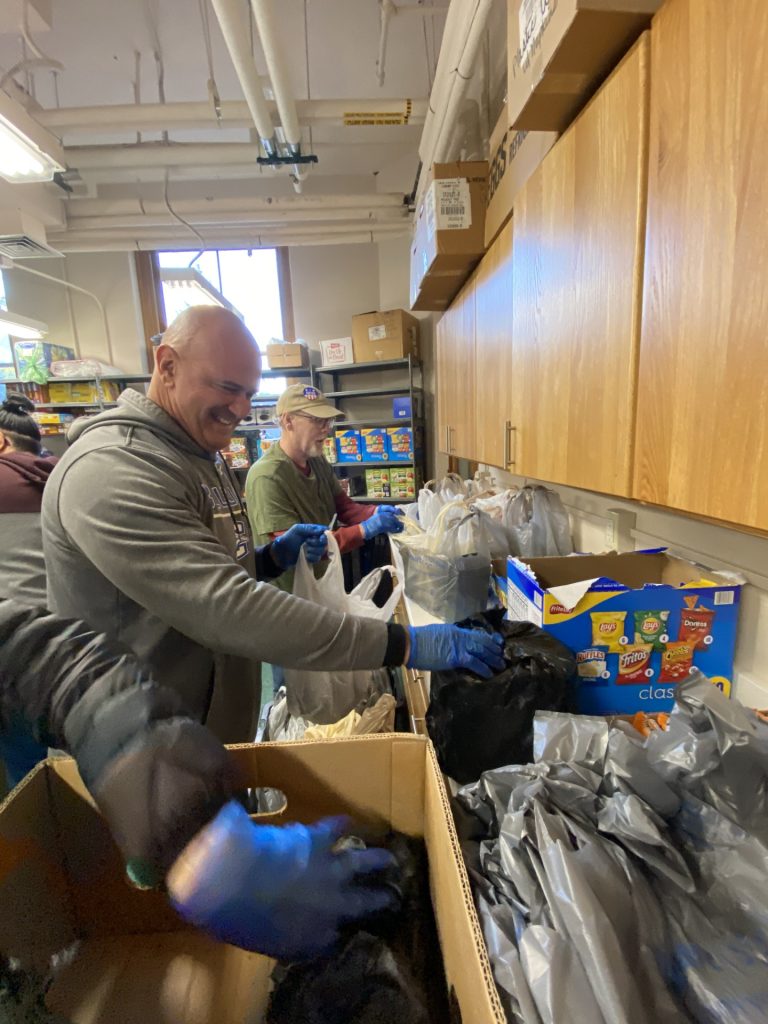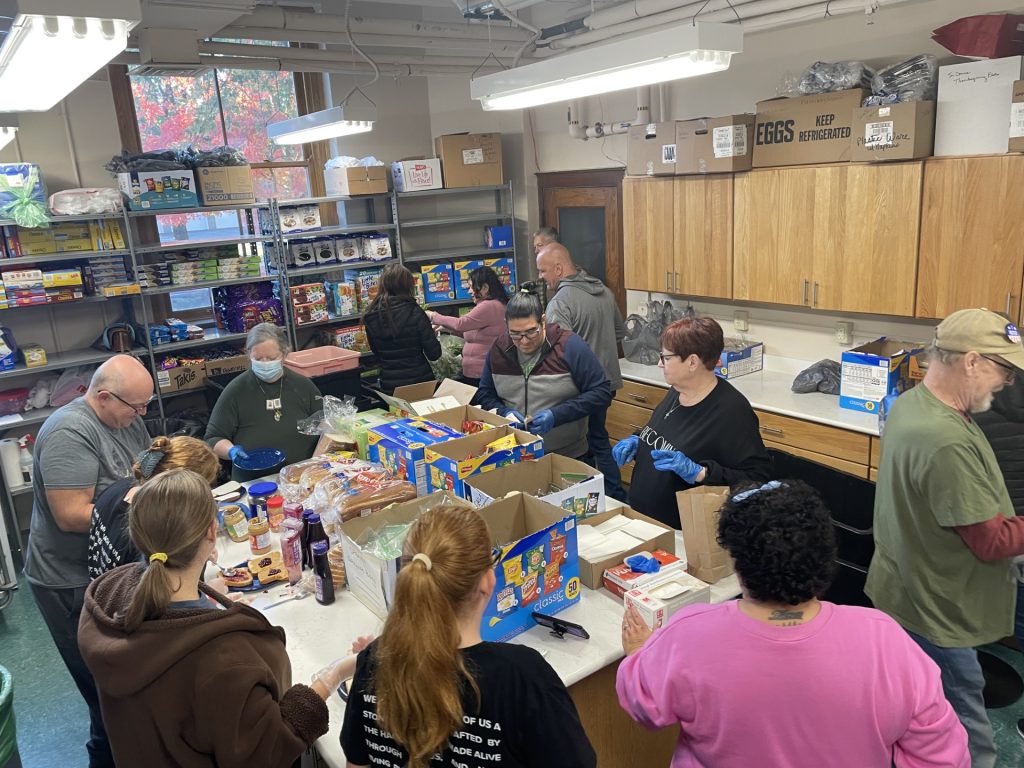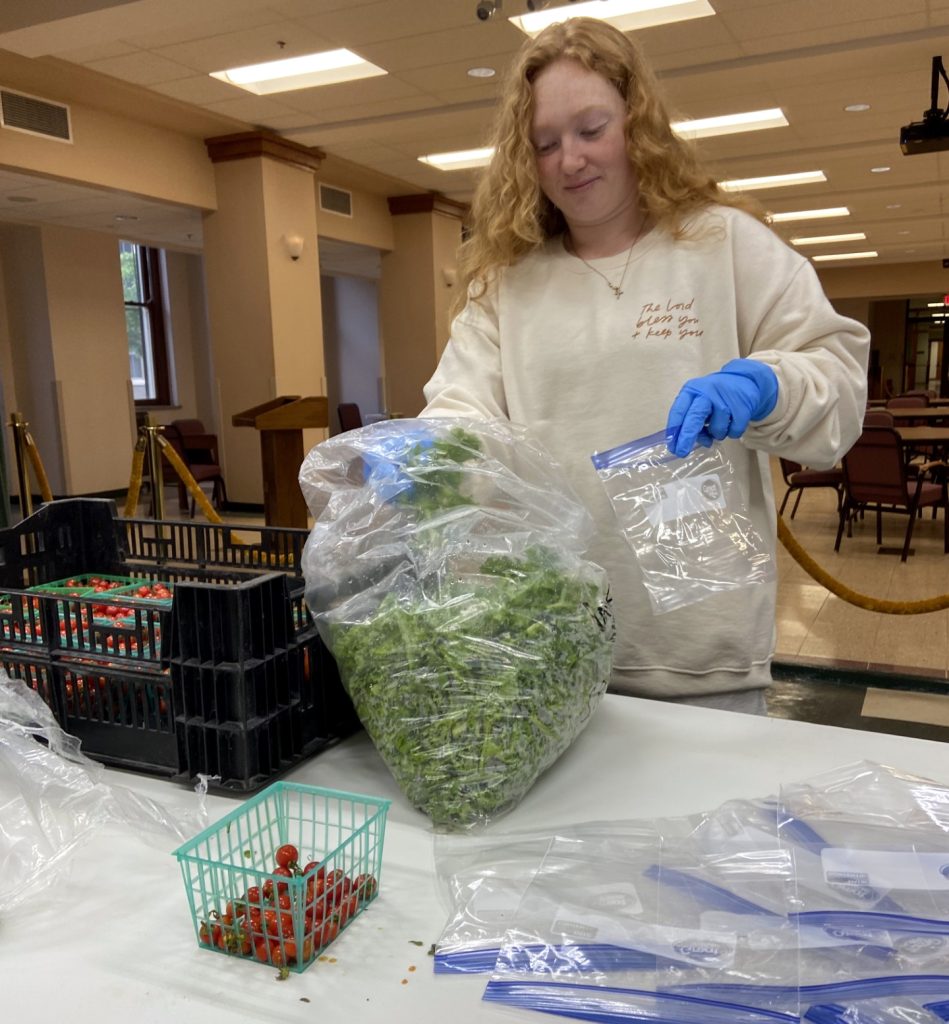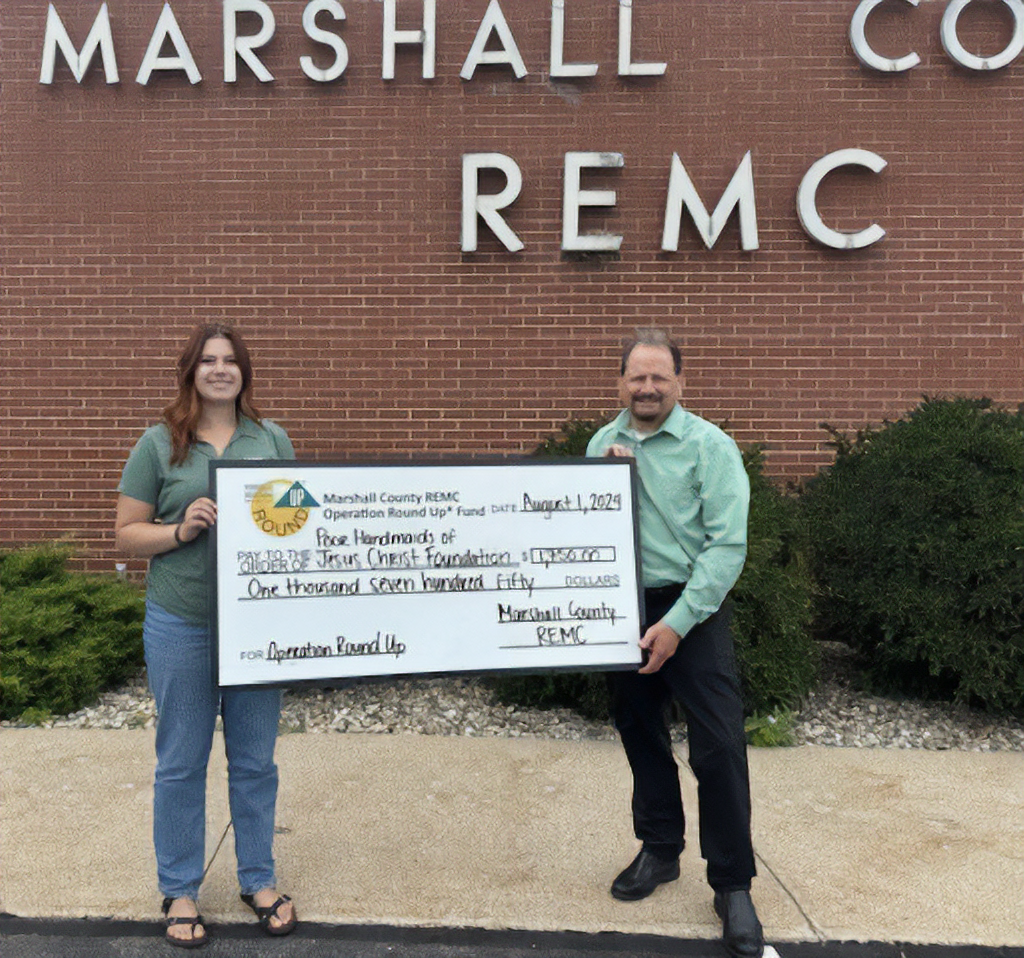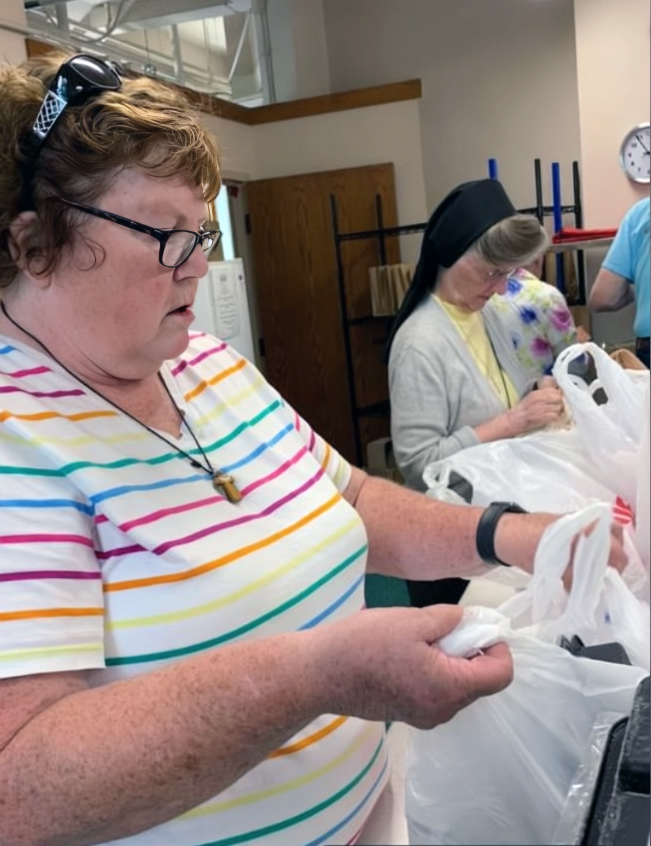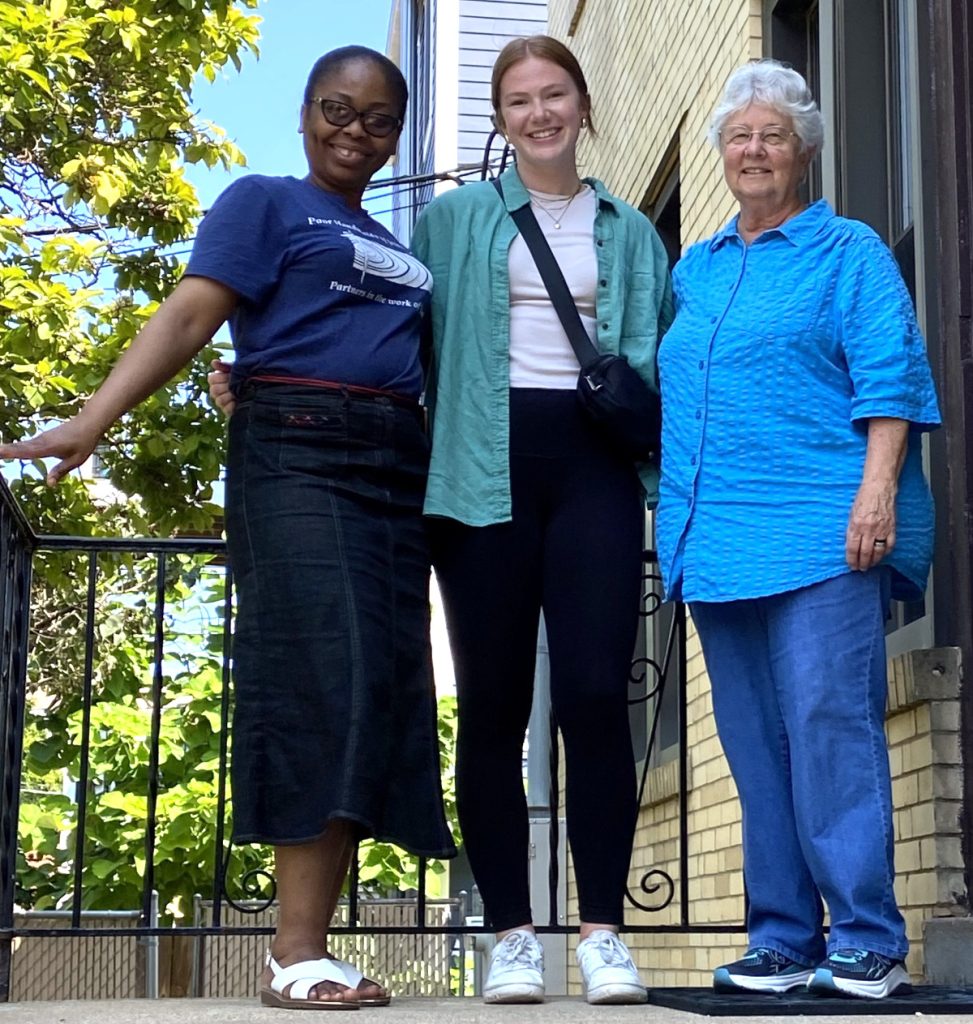Your Support at Work

When Mary and her husband moved from Montana, they were searching for a new church home. From the very first time they walked into Mass with the Poor Handmaids of Jesus Christ, the Sisters’ warm welcome made them feel at home and invited them to serve.
“God hooked us up with this. We have a heart of service.” – Mary
Mary’s heart for service runs deep. She once served as a Catholic youth minister on an Indian reservation, where she saw how compassion can build bridges and strengthen faith. That experience shaped the way she now approaches volunteering with gratitude and joy.
Today, when she is not traveling, Mary shows up each week to help in the PHJC Volunteer Program’s food ministry. From packing boxes to greeting families, she shares her time and presence as a way to live out her faith and stay connected to the community.
Because of you, volunteers like Mary are able to bring their gifts to our ministries and live our their faith in action.
Join Mary and other volunteers in our food ministry! Volunteers gather on Tuesdays and Thursdays to serve with joy and compassion.
If you’d like to learn more, please reach out to:
Sr. Connie Bach, PHJC
cbach@poorhandmaids.org
(574) 340-6409
Your Impact Around the World
When Mallory boarded a plane to Kenya, she carried with her a lifelong dream: to serve as a missionary and share God’s love across the world. Thanks to your support of the PHJC Volunteer Program, that dream became reality.
Welcomed into the daily rhythm of life with the Poor Handmaids of Jesus Christ, Mallory prayed with the Sisters, helped in classrooms, and even had the profound opportunity to bring communion to the sick and elderly. “In that moment,” she said, “I could truly feel Jesus present in the room.”
Although illness cut her stay short, Mallory still experienced the strength of prayer, the kindness of the Sisters, and the love of a community that embraced her as family. Because of you, volunteers like Mallory are able to grow in faith and bring Christ’s love to communities around the world.
Leadership Update

The Poor Handmaids of Jesus Christ are grateful to announce the newly elected U.S. Province Leadership Team for 2025–2029.
Their official installation will take place on Saturday, November 8, 2025, at 2:00 p.m. ET in Ancilla Domini Chapel, Donaldson, Indiana.
Province Leadership Team:
- Sister Shirley Bell, PHJC – Province Leader (reelected for a second term)
- Sister Deborah Davis, PHJC – Councilor (reelected)
- Sister Marybeth Martin, PHJC – Councilor (reelected)
- Sister Connie Bach, PHJC – Councilor (newly elected)
- Sister Margaret Anne Henss, PHJC – Councilor (newly elected)
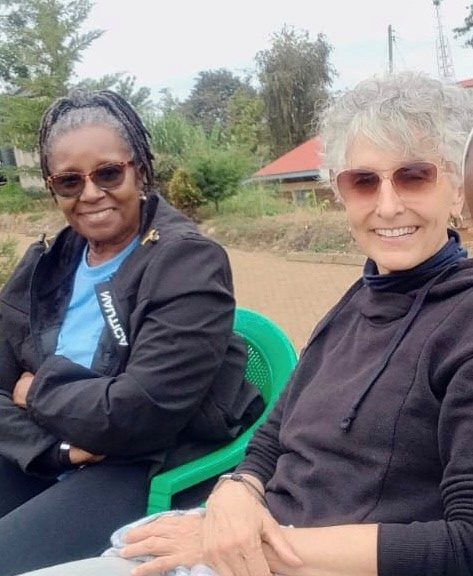
My friend, Angela Harris, and I had the great fortune to spend 9 weeks volunteering with the Poor Handmaids of Jesus Christ (PHJC) in Igoji, Kenya this summer. Angela’s skills with logistics made her a perfect fit to work in the procurement section of St. Anne Mission Hospital. My proposed task was to teach English in the local school. However, since school was on break, I was able to contribute by folding hospital laundry, helping the Aspirants improve their English, and researching possible funding sources for the hospital’s goals.
During my time there, I frequently heard this phrase: “Let us appreciate _______.” That meant that someone would be thanked or honored by a round of applause. Daily, we appreciated God, but often it was another staff member. So, at this point, I would like you to help me appreciate, in a Kenyan manner, those I’d like to thank.
First, let us appreciate the Poor Handmaids in Kenya for their humble service to God, their community, and for their amazing hospitality. What an inspiring group of women I’ve met!
Let us also appreciate the staff at St. Anne, who tirelessly provide care to their patients, and lovingly accepted Angela and me as part of their community…and didn’t laugh when I called them the wrong name and mispronounced the few Swahili words I tried to learn.
In addition, let us appreciate the beautiful people of Kenya, who so warmly greeted me on my daily walks, returned my waves, offered me rides and helped me buy supplies at the local stands. I was usually the only mzungu (white person) around, so I got quite a bit of attention.
Finally, let us appreciate the PHJC Volunteer Program and Sr. Connie. This was an experience I’ll never forget. Along with that appreciation, I’d also like to encourage others to become involved. The Volunteer Program has provided me with so many life-changing and thought-provoking experiences, and I’ve been able to meet and watch an incredible group of women following their charism. The opportunity is available to others, and I so appreciate that it was given to me.
Dear Reader,
I recently had one of the most moving experiences in a long time. While visiting one of the hotels where our volunteers serve, a man named Clyde approached me quietly and handed me two dollar bills and three quarters, saying, “It’s not much, but I want to give back.” That humble, powerful gesture brought tears to his eyes and to ours. Moments like this remind us of the dignity and generosity that live in the hearts of those we serve. In this Spring 2025 Newsletter, you’ll meet Maureen “Mama Mo” Duffin, whose own life was transformed through the PHJC Volunteer Program and who now gives back as a devoted volunteer. Your support makes these stories of hope and healing possible. Thank you for walking with us, and know you are always welcome to witness the mission in action.
Sincerely,

Sister Connie Bach, PHJC
Your Support Changes Lives
When you support the PHJC Volunteer Program, you’re helping create lasting change in the lives of people like Maureen Duffin—known lovingly in the community as Mama Mo.
Mo is no stranger to the challenges of housing insecurity. After her father passed away in 2014, finding affordable housing became nearly impossible. Without steady income or even a birth certificate to establish her identity, Mo spent years living at the Red Rock Inn hotel in Plymouth, Indiana, cycling through 14 different rooms over time.
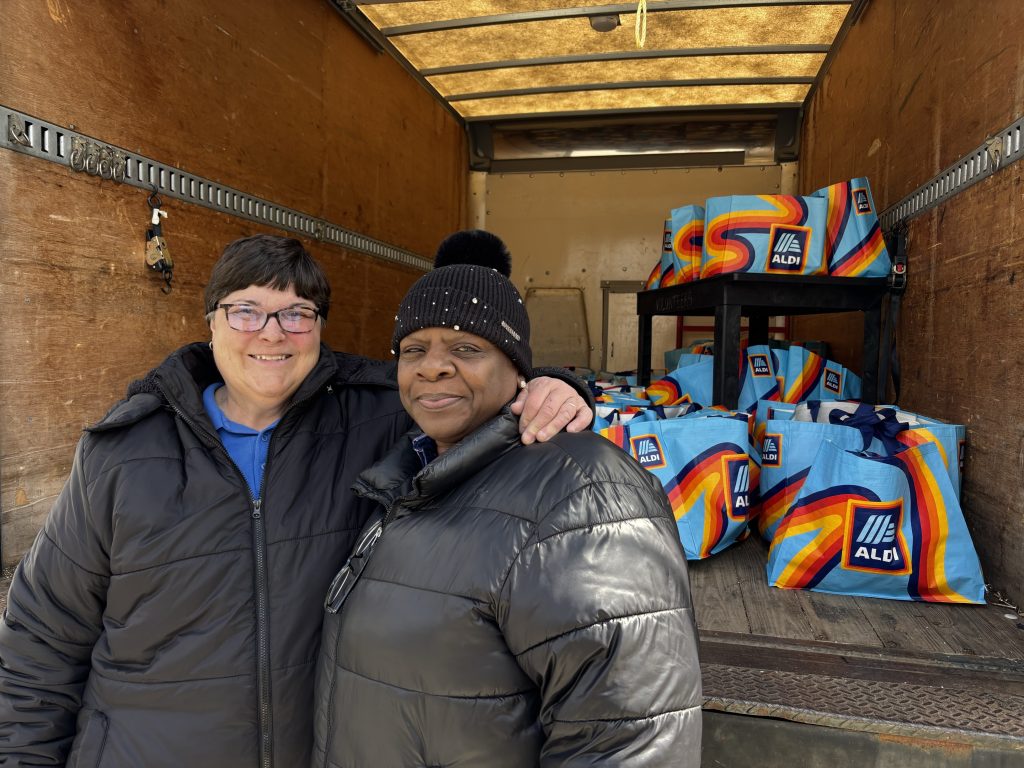
But your generosity helped change the course of her life.
During the height of the COVID-19 pandemic, Mo met Sister Connie Bach, PHJC. Through the PHJC Volunteer Program, she received more than food and basic supplies—she found support, compassion, and a way forward. Volunteers helped her obtain her birth certificate, reclaim her legal identity, and eventually move into permanent housing.
“I went to get some paperwork done, and when I came back, all my things were moved into my new apartment,” Mo shared. “I didn’t even know some of the people who helped make this happen.”
Today, Mo is one of the dedicated volunteers giving back to the very hotel she once called home. Each week, she helps deliver food and care to others in need, paying forward the kindness she received.
“I had gotten used to living in a hotel,” she said. “But God told me it was time to move forward, and with the help of Sister Connie and the PHJC Volunteers, I was able to do that.”
In March, Mo reached another milestone: she got her first car. With it, she’s continuing her mission to serve. “I pray every day that others will hear the voice of God like I did. I don’t worry anymore because I know He is with me.”
Because of you, Mo’s story is possible. And because of Mo, the compassion you give continues to grow.
A New Way to Give
We are excited to share a new opportunity for you to support the PHJC Volunteer Program in an even more personal way: peer-to-peer fundraising.
This new initiative allows dedicated supporters like you to create a personalized fundraising page and invite your network to join you in making a difference. By sharing why the Volunteer Program matters to you, you are helping expand the circle of compassion and service that lies at the heart of the Poor Handmaids’ mission.
Whether your efforts inspire one gift or many, your voice can help us grow our reach—funding more service trips, forming new partnerships, and encouraging others to live out their call to serve. Thank you for walking with us in mission. Your support continues to make a lasting impact.
Delivering the Joy of Easter
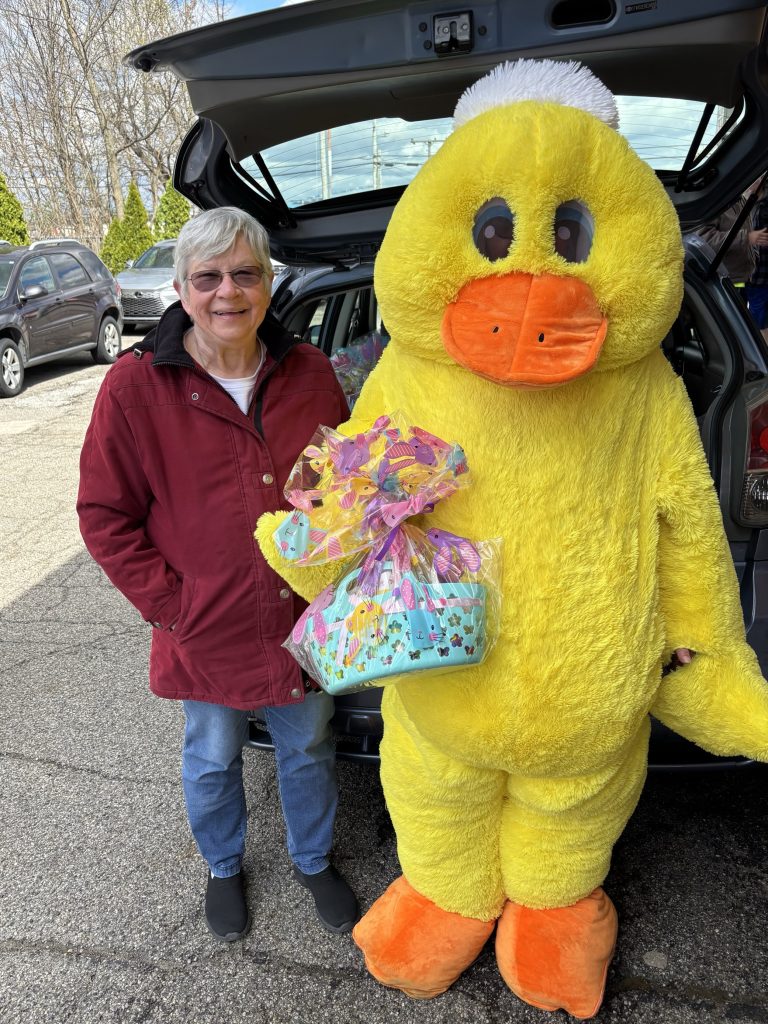
During Holy Week, the PHJC Volunteer Program brought the spirit of Easter to life through a joyful outreach at one of the local hotels where families experiencing housing insecurity currently live. Volunteers arrived with grocery bags, Easter surprises, and hearts ready to share compassion and care.
Each family received a bag filled with groceries and items thoughtfully chosen to help them celebrate Easter with comfort and dignity. Children were surprised with Easter baskets full of snacks and treats, bringing smiles and a sense of celebration.
To make the day even more memorable, a friendly duck mascot stopped by to visit the children. Families had the chance to take photos and enjoy a moment of lighthearted fun. (Pictured: volunteer Joyce Oboy sharing smiles with families alongside the duck.)
One volunteer said, “We didn’t just bring food. We brought the joy of Easter.”
Taking place during the sacred days leading up to Easter, this outreach was a powerful reminder of what it means to serve with love. Inspired by the legacy of Saint Katharina Kasper, our volunteers offered presence, dignity, and hope to those who need it most.
Because of your generosity, families felt supported and seen. You helped us create not just a holiday meal, but a meaningful moment of joy and togetherness.
Thank you for making moments like this possible.
Sr. Lovina and Fr. Adam have a conversation with Sisters Connie Bach and Nkechi Iwuoha, both Poor Handmaids of Jesus Christ about their relationship and service to the underserved and most vulnerable in the society. Sr. Nkechi talks about the book, “Reseeding Religious Life Through Global Sisterhood,” implications and invitation to an emerging newness in religious life.
Dear Reader,
As we journey through this winter season, I am filled with gratitude for the countless ways our volunteers continue to embody the spirit of compassion and service. Your dedication to our mission is truly inspiring. May this newsletter serve as a reminder of your invaluable contributions and the positive impact you make on the lives of others. I hope you enjoy reading about the wonderful work we have done together.
Thank you for your unwavering commitment to our community.
Sincerely,
Sister Connie Bach, PHJC
A Hand Up, Not Just a Handout
In 2021, a stark reality came to light: dozens of unhoused families were living in motels on Plymouth’s north side, often without transportation to access vital resources like food pantries. This discovery sparked the beginning of the PHJC Volunteer Food Ministry, a mission rooted in compassion and a desire to make a tangible difference in the lives of our neighbors in Central Indiana.

What began as a simple act of delivering sack lunches and groceries has evolved into a comprehensive support system, addressing not just immediate needs but also empowering individuals to rebuild their lives. Volunteers gather regularly to prepare meals, assemble grocery bags, and collect essential items like hygiene and paper products. These items are then delivered directly to motel residents, ensuring access to basic necessities and bridging the gap created by lack of transportation.
But the PHJC Volunteers go beyond simply providing material goods. They understand that true support means building relationships, earning trust, and addressing the root causes of hardship. Through consistent efforts and genuine care, volunteers have become a trusted resource for motel residents. This has opened doors to providing a wider range of assistance, including connecting households with community service providers, helping them navigate applications for social service benefits, and providing essential household items like coats, clothes, boots, bedding, and more.
The impact of this ministry is far-reaching. Over the past few years, thousands of meals and grocery bags have been distributed, along with thousands of other essential items. But the true measure of success lies in the individual stories of transformation. Volunteers have been instrumental in helping individuals access rehabilitation programs, secure stable housing, navigate complex medical situations, and overcome a variety of challenges. They’ve provided transportation to critical appointments, advocated for access to vital services, and offered a listening ear and a helping hand during times of crisis.
Your compassion has empowered us to make a lasting impact. THANK YOU for your continued generosity and partnership.
2024 by the Numbers
The thousands of meals and essential items provided, as shown in the following statistics, are a direct testament to your compassion.
- 15,060 Sack Lunches
- 1,115 Extra Sandwiches
- 7,220 Grocery Bags
- 195 1-pound ground beef packages
- 390 Vegetables
- 225 Holiday Meals
- 787 Hygiene Bags
Abby’s Dedication: A Volunteer’s Story
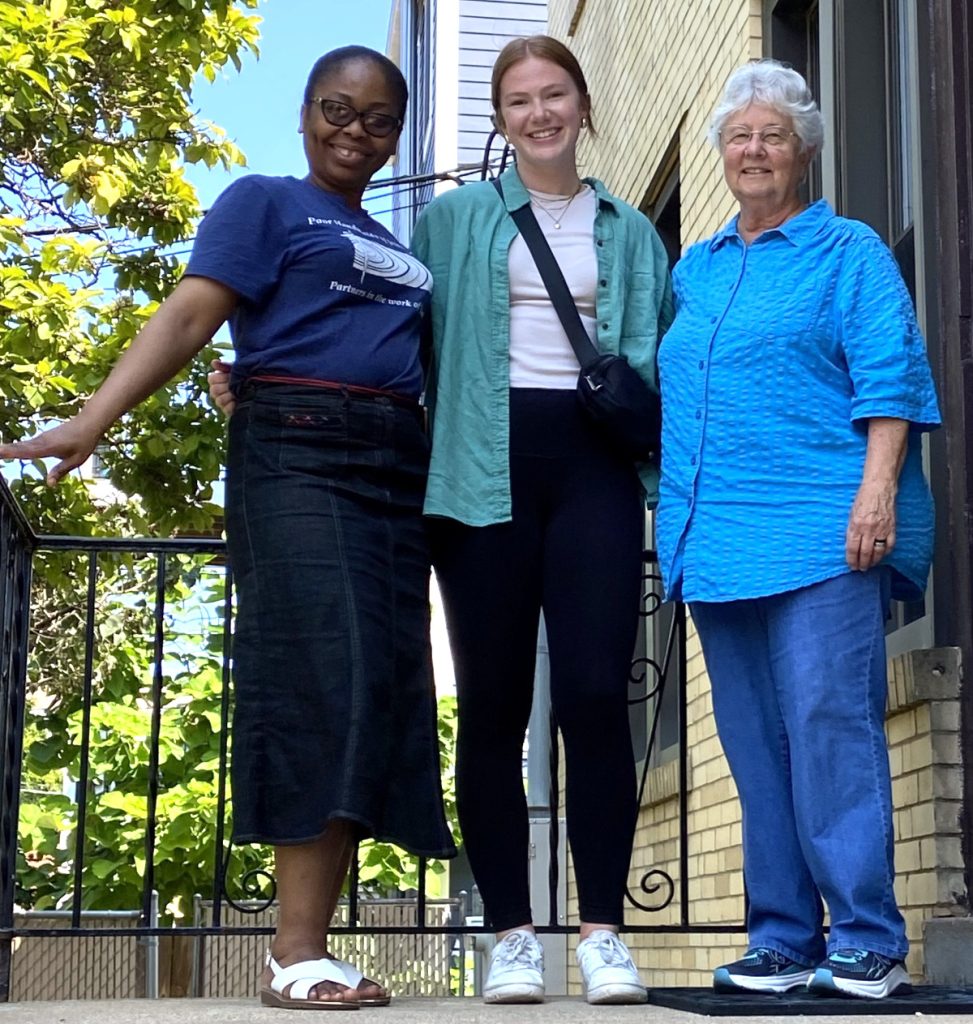
As the winter winds howl and holiday cheer fades, we reflect on the warmth and kindness our community has shown. One such example is the inspiring story of Abby Jackson, a dedicated high school student who recently volunteered with the PHJC Volunteer Program.
Abby joined Sisters Chiadlu Ohalete and Marie Heppler to lend a helping hand during their move to a new convent.
“I was happy to help make the move easier,” Abby said. “It’s a great way to give back to the community and live out my faith.”
Abby’s commitment to service extends beyond this recent endeavor. She has also volunteered to prepare and distribute meals to those in need, gaining a deeper understanding of the challenges faced by many in our community.
“The most surprising part of my experience was the conditions some people must face in their daily lives,” she reflected. “It’s humbling to see how much we can impact someone’s life, even with a simple act of kindness.”
Abby’s enthusiasm is contagious. She encourages others to join the PHJC Volunteer Program, inviting them to “come out to volunteer with an open mind and an open heart.”
We extend our heartfelt thanks to our generous donors. Your support makes it possible for volunteers like Abby to make a positive impact on our community.
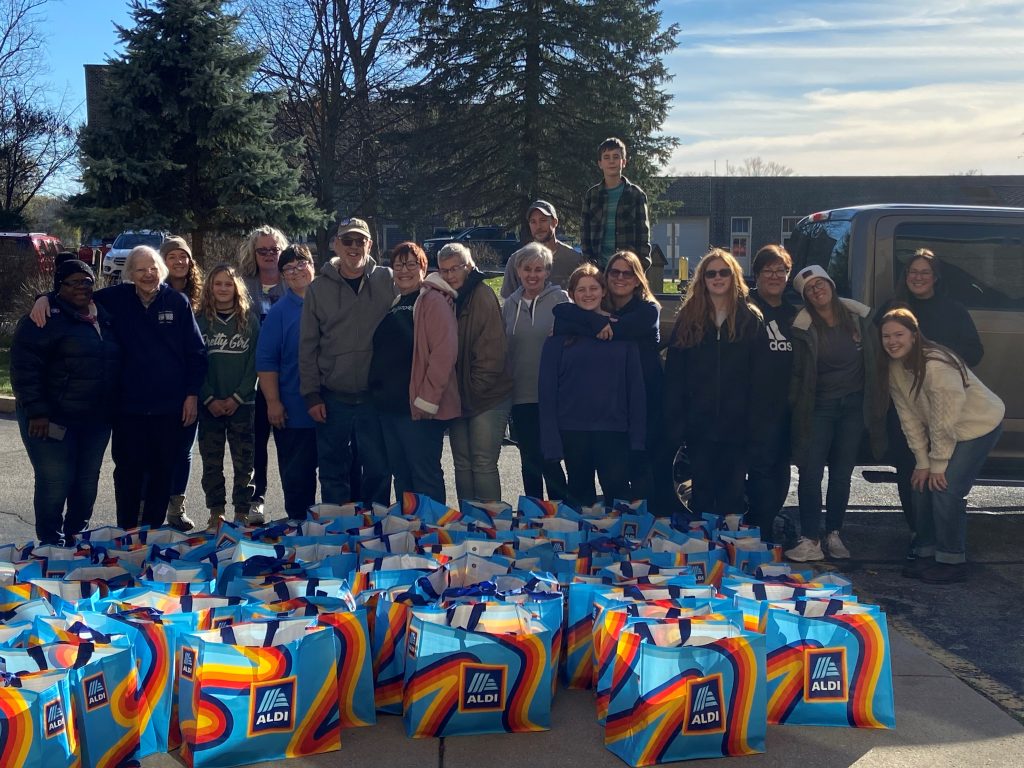
Spreading Holiday Cheer
This holiday season, our amazing volunteers prepared and delivered 75 Thanksgiving meals to individuals in local hotels, sharing both nourishment and kindness. They returned at Christmas with 75 more meals, along with gift bags and gift cards for adults, teens, and children.
Thanks to their efforts, those who may have felt alone found connection and joy. We are truly grateful for our volunteers who continue to brighten our community!





















